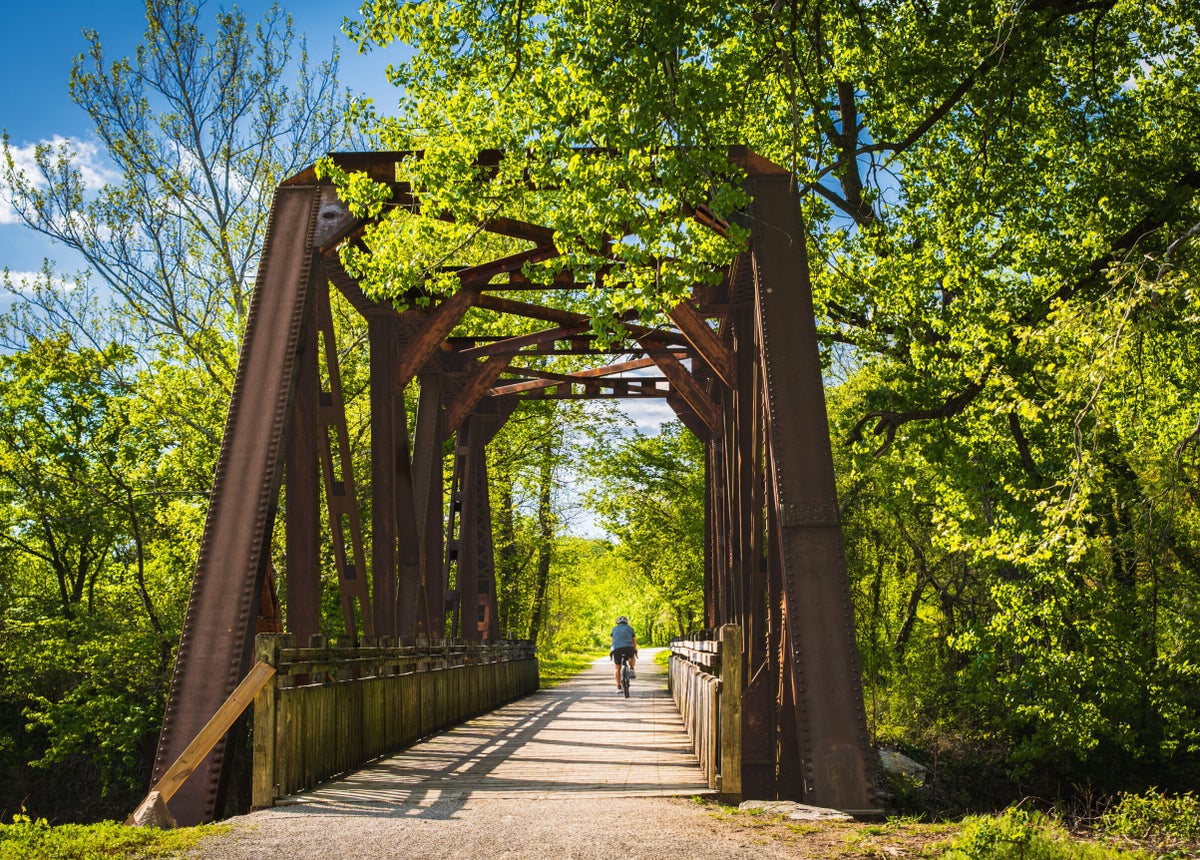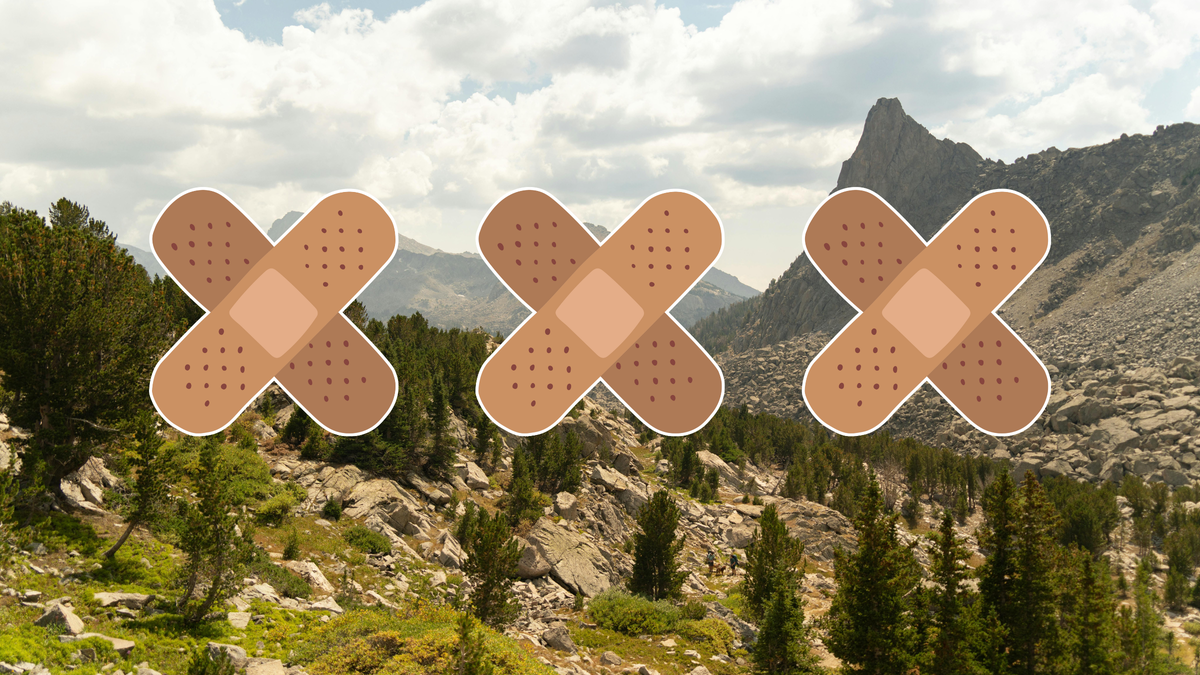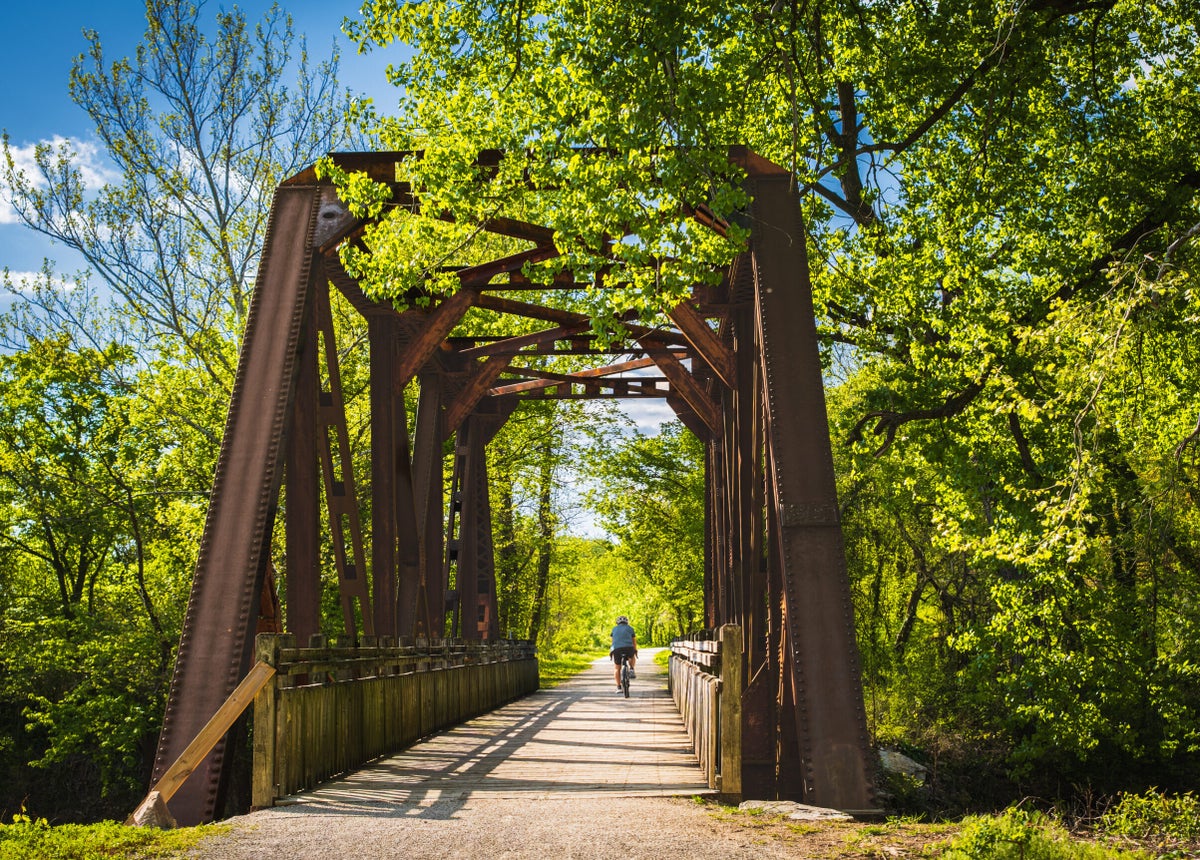
In 1963, Illinois naturalist May Watts, inspired by walking paths she’d seen in Britain, wrote a letter to the editor of the Chicago Tribune, suggesting converting a stretch of abandoned railroad into a public trail. Her idea caught fire among the newspaper’s readers, inspiring the opening of the Illinois Prairie Path in the Chicago suburbs a few years later.
A new, hour-long documentary now airing on public television tells the story of how Watts’ simple idea ultimately led to the creation of more than 26,000 miles of rail-trails across the country.
From Rails to Trails is based on a book by Rails-to-Trails Conservancy (RTC) co-founder Peter Harnik. A nonprofit organization based in Washington, D.C., RTC works with communities to preserve unused rail corridors. The book, and now film chronicles the 60-year, sometimes rocky movement to create the still-expanding network of car-free paths.
As proponents of the movement point out today, railroad corridors are generally flat, with only slight grades, because they were built to accommodate trains. Many railroad corridors today are no longer used by trains, and those in support of the idea are hoping to give these paths new life. Trails give people a place to connect with nature and get a little exercise, and communities don’t have to start from scratch to build them if they put them on existing corridors.
“You’re recycling a resource that the railroads and others have invested a tremendous amount in,” Harnik tells Outside.
Nationwide, trains were chugging along on about 254,000 miles of tracks in 1916, at the peak of the railroad’s influence. But by the 1970s and early 1980s, large swathes of tracks had been abandoned, due to the decline of industries that depended on them and the construction of the interstate highway system.
Today, trains still operate on about 137,000 miles of rail corridor. Of the 117,000 abandoned miles, roughly half were lost to development and other uses before the creation of the Rails-to-Trails Conservancy in 1986. About 26,000 miles of the remainder have been (or are being) converted to rail trails.
As they worked to convert rail lines for new uses, activists learned that finding out when a railroad company would abandon tracks was their biggest challenge. Typically, that happened quickly, leaving municipalities little time to evaluate whether defunct tracks would make a good trail. Through legal work, the conservancy slowed down that process. Today, communities are notified in advance, giving them more time to raise money for trails.
“Trails aren’t super expensive, but you have to take out tracks, take out ties, smooth out the corridor, and put down an asphalt or crushed rock surface,” Harnik says. “That costs money.”
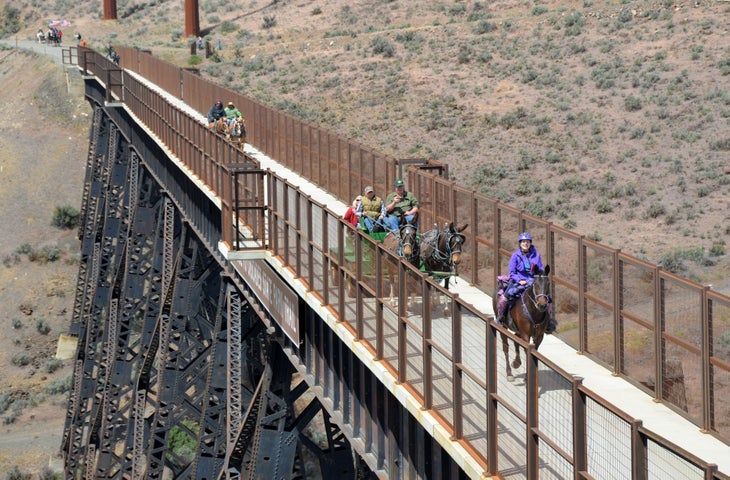
The documentary touches on other challenges as well. Sometimes, landowners fought against trails through their property. Two of these landowners were interviewed in the documentary including one who moved away because he didn’t want to live next to a trail. While there’s still possibility for property disputes, the film explains how “railbanking” legislation passed by Congress in 1983 allowed communities to use abandoned railroad corridors as trails while preserving them for potential future train use.
From Rails to Trails highlights some of the country’s best-known rail-trails, including the High Line in New York City, a mile-and-a-half-long stretch of elevated railroad corridor once slated for demolition that’s now a linear park where people stroll among gardens and public art.
Also mentioned are the bustling Atlanta Beltline, conceived by a graduate student and once maligned as a taxpayer boondoggle, and the West Rail Trail in Brownsville, Texas, where a grassroots community effort stopped an abandoned railway from becoming a toll road.
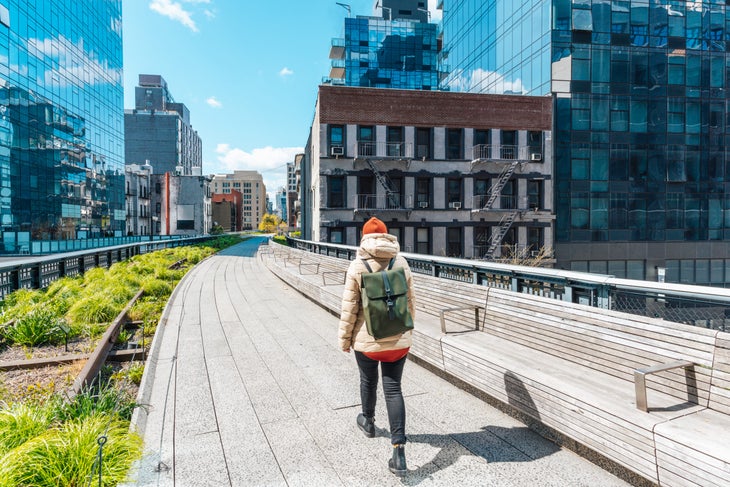
Trails, Harnik says, provide economic value in rural areas and ease congestion in urban areas. For example, the Great Allegheny Passage runs for 150 miles through economically depressed areas between Pittsburgh and Washington, D.C.
“Now that this railroad track has been converted into a trail, that’s a beautiful trip through the mountains that almost anyone can do because of the even grade—and the small towns have come back to life,” Harnik says. “People have converted barns and homes into bed and breakfasts and restaurants barely eking by have come back into profitability. The whole area is feeling a rejuvenation.”
And riding or walking the trails gives users more than a stretch of gravel or asphalt to explore. These outdoor escapes offer a chance to learn the history of corridors where trains carrying freight, cattle, mail, and passengers once ran.
“When you’re bicycling along at 15 miles per hour, you can almost hear the train whistle, and alongside the trails you can see leftover artifacts from the railroad industry,” Harnik says.
Noteworthy figures such as former Secretary of Transportation Pete Buttigieg and Vermont Governor Howard Dean are interviewed in the film, shedding light on how Burlington’s Island Line Trail became the subject of a landmark U.S. Supreme Court case. Dan Protess directed and produced the film.
Actor Edward Norton, whose father was involved in the early days of the Rails to Trails movement, grew up hiking and biking along many of the rail-trails. He also served on the board of the High Line.
“It reminds us of what tenacious citizen activism can accomplish,” Norton says. “All good ideas seem half-baked and unrealistic at first, but, as my grandfather used to say, ‘What ought to be, can be … with the will to make it happen.’”
Harnik says he hopes the film will inspire people who don’t automatically jump out of bed to go for a bike ride or a walk to explore area trails—or advocate for future routes.
“Part of the reason I wrote the book (upon which the documentary is based) was to encourage people to look for abandoned tracks wherever they live, so we could see how many are available and what condition they’re in,” says Harnik, who has explored more than 200 rail-trails in 45 states.
That could add momentum to an effort to complete a halfway-finished multi-state route, dubbed the Great American Rail-Trail, which would connect 3,700 miles of existing rail-trails into a route that spans the country, from Washington D.C. to Washington State.
“So many people have now experienced rail-trails,” Harnik says. “They go home and say, ‘We could do that here.’”
To see the documentary “From Rails to Trails,” check local PBS listings or click here to stream it.
The post ‘From Rails to Trails’ Follows the Fight to Convert Abandoned Railroads to Pathways appeared first on Outside Online.










